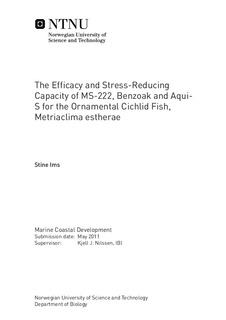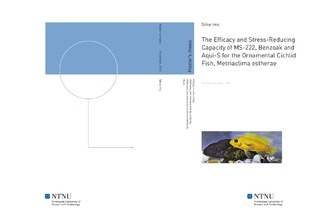| dc.contributor.advisor | Nilssen, Kjell J. | nb_NO |
| dc.contributor.author | Ims, Stine | nb_NO |
| dc.date.accessioned | 2014-12-19T13:11:45Z | |
| dc.date.available | 2014-12-19T13:11:45Z | |
| dc.date.created | 2011-06-16 | nb_NO |
| dc.date.issued | 2011 | nb_NO |
| dc.identifier | 423833 | nb_NO |
| dc.identifier | ntnudaim:6490 | nb_NO |
| dc.identifier.uri | http://hdl.handle.net/11250/244742 | |
| dc.description.abstract | The financial crises and global change have caused setbacks to the improvements in many undeveloped countries. To be able to achieve the Millennium developmental goals within 2015, it will require a higher effort. Sub-Saharan African countries show the slowest economic growth and have experienced the highest setbacks. Malawi is one of these countries and is struggling with a high share of poverty and poverty related issues. Trade is believed to be the most prominent tool to fight world poverty, as it will provide economic growth and employment. Cichlid fishes from Lake Malawi are popular ornamentals for hobby aquarist s world wide, representing yearly turnover of 340 million US dollars. It is suggested that ornamental Malawi cichlids can be developed into an industry benefiting country and the local poor people. This can be achieved without pressure upon the lake biodiversity if the wild-collected fishes are used for breeding purpose and not for export. To be able to deliver a high quality fish, it will be necessary to establish proper handling strategies that will ensure fish health and welfare. Stress from handling procedures is known to have negative impact on fish growth, reproduction, immune function and survival. Anesthetics may be a useful tool during handling procedures of the fish, as it can reduce the perception of the stressor and thus prevent activation of the hypothalamus-pituitary-interrenal (HPI) axis. In this study the three commercial anesthetics; MS-222, Benzoak® and Aqui-S were evaluated for; (1) anesthetic efficacy, (2) safety margin, (3) prolonged exposure and (4) stress-reducing capacity on the Malawi cichlid, red zebra (Metriaclima estherae). The overall results show that concentration of 150 mg/L MS-222, 120 mg/L Benzoak® and 50 mg/L Aqui-S gave satisfying introduction and recovery time for anesthesia. Both MS-222 and Aqui-S gave high safety margins as no fish mortality was recorded after anesthetic exposure for 30 minutes. Benzoak® gave a lower safety margin as there was recorded 50 % mortality following 10 minutes exposure. High mortality rate and sign of insufficient blockage upon the red zebra fish, suggested that prolonged exposure to the tested sedative dosages did not benefit the fish. MS-222 exposure reduced the stress response while Benzoak® and Aqui-S seemed to self-induce an increase in plasma cortisol concentration after anesthetic exposure. In conclusion; for short-term treatment on red zebra fish, a concentration of 150 mg/L MS-222 is recommended. | nb_NO |
| dc.language | eng | nb_NO |
| dc.publisher | Institutt for biologi | nb_NO |
| dc.subject | ntnudaim:6490 | no_NO |
| dc.subject | MSMACODEV Marine Coastal Development | no_NO |
| dc.subject | Fisheries and Marine Resources | no_NO |
| dc.title | The Efficacy and Stress-Reducing Capacity of MS-222, Benzoak and Aqui-S for the Ornamental Cichlid Fish, Metriaclima estherae | nb_NO |
| dc.type | Master thesis | nb_NO |
| dc.source.pagenumber | 51 | nb_NO |
| dc.contributor.department | Norges teknisk-naturvitenskapelige universitet, Fakultet for naturvitenskap og teknologi, Institutt for biologi | nb_NO |

